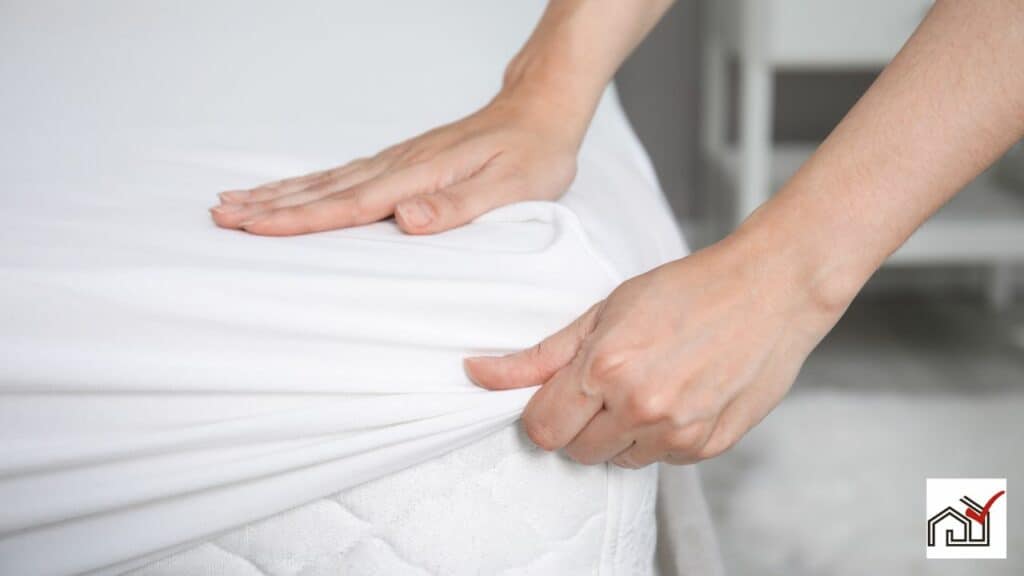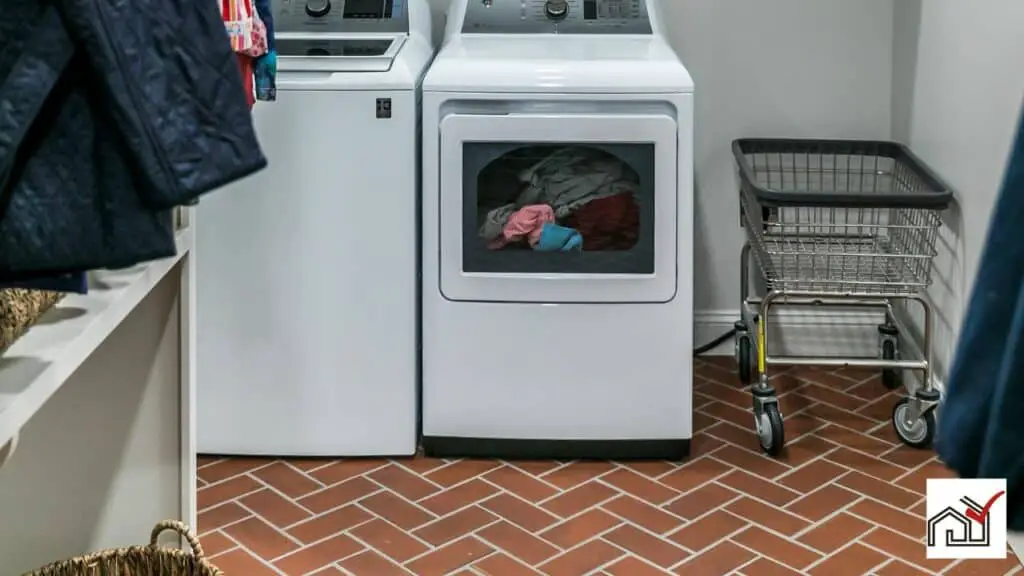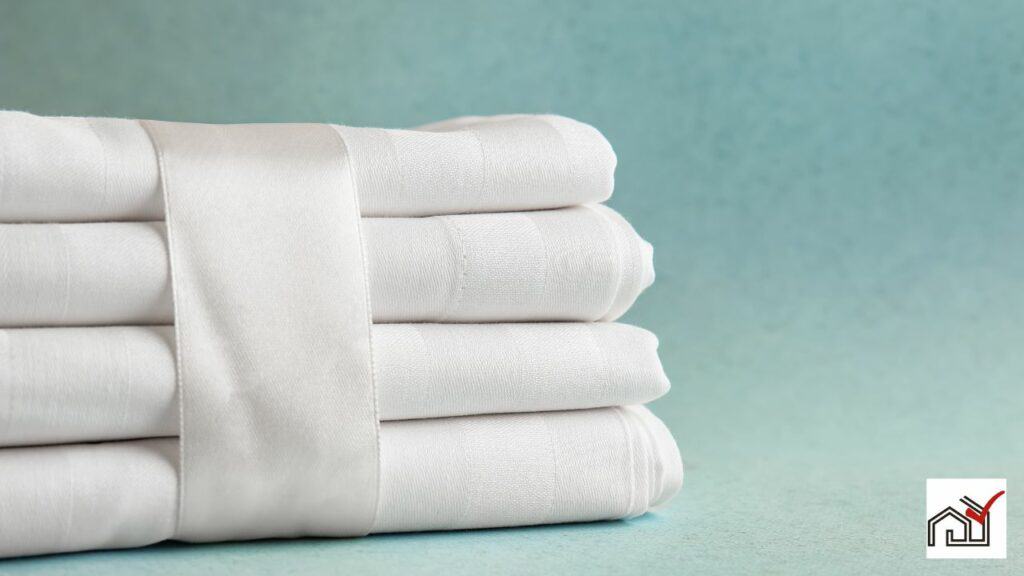The size of a fitted sheet depends on the mattress size it is meant to cover. There are standard sizes for mattresses such as Twin, Full, Queen, and King, and the fitted sheets are made to match these sizes.
It's important to choose a fitted sheet with the correct pocket depth to match the thickness of the mattress, which helps keep the sheet in place and avoids discomfort.
To ensure the best fit, it's recommended to check the sizing charts from the manufacturer since sizes can vary between brands.
There are also special sizes like Twin XL or California King for non-standard mattresses, so there are fitted sheets available for almost any bed size.
Understanding Fitted Sheet Sizes
Fitted sheets come in various sizes to match standard mattress dimensions. They feature elastic corners to fit securely over the mattress and prevent slipping. Common sizes include twin, full, queen, king, and California king.
When purchasing fitted sheets, it's important to know the length, width, and pocket depth, which is the maximum mattress height the sheet can cover. Standard pocket depths range from 7 to 14 inches. Some brands offer deep-pocket sheets for mattresses up to 16 inches tall.
Typical dimensions are as follows: a twin size fitted sheet is 39 by 75 inches, queen size is 60 by 80 inches, king size is 76 by 80 inches, and California king size is 72 by 84 inches. Sizes may vary slightly between brands or due to shrinkage after washing, so checking the manufacturer's specific measurements is recommended.
Standard Fitted Sheet Dimensions
Standard fitted sheet dimensions vary by bed size.
For a twin bed, the sheet size is 38 x 75 inches (96.5 x 190.5 cm).
A twin XL bed, which is longer, requires a fitted sheet measuring 38 x 80 inches (96.5 x 203 cm).
Full or double beds need fitted sheets sized 54 x 75 inches (137 x 190.5 cm), suitable for one or two sleepers.
Queen-size beds use fitted sheets that are 60 x 80 inches (152.5 x 203 cm), offering a balance of sleeping space and room conservation.
King-size beds require fitted sheets that are 76 x 80 inches (193 x 203 cm), providing ample space for two sleepers.
When selecting fitted sheets, also consider the pocket depth to ensure compatibility with the mattress height, especially for mattresses with toppers or extra padding.
The right fit is important for comfort and appearance.
Measuring Your Mattress Accurately
To properly fit a sheet, measure your mattress's width, length, and depth, including any toppers or pads. Begin by removing any sheets to see the mattress. Measure the width from the left to the right corner, and the length from the top to the bottom edge.
Measure the depth from the top of the mattress to the bottom, including toppers, to determine the pocket size needed for the sheet. Standard sheets fit 12-inch deep mattresses, but if yours is deeper, look for deep pocket sheets for 18-inch depths or extra-deep sheets for up to 25 inches.
Bed sizes and sheet sizes vary, so do not assume a queen-size sheet will fit all queen beds. Check the sheet's label for washing instructions to account for shrinkage. The sheet pocket should be 1 to 2 inches deeper than your mattress for a snug fit without overstretching the fabric.
Fitted Sheet Pocket Depth Explained
Pocket depth is the distance from the top of the mattress to the bottom corners of the fitted sheet. It's important to match the sheet's pocket depth with your mattress thickness to ensure the sheet stays in place.
Standard pocket sheets typically fit mattresses 7 to 12 inches thick. For mattresses 13 to 17 inches thick, deep pocket sheets are recommended. Extra-deep pocket sheets are designed for mattresses up to 25 inches thick.
If you use a mattress topper, consider the added height when selecting a fitted sheet. Using the wrong pocket depth can result in a fitted sheet that moves, causing discomfort and a messy bed. Shrinkage after washing may also affect the fit.
Adjustable beds require fitted sheets that can adjust without slipping. A properly fitting sheet is crucial for both aesthetics and comfort.
Special Considerations for Bedding
When choosing fitted sheets, consider the fabric type, elasticity, and any additional bedding like mattress toppers. Bed sheet sizes vary, and it is essential to match them with the mattress size for a proper fit, especially for non-standard sizes such as California king or queen beds. Twin XL mattresses, often used in college dorms, require longer sheets.
The elastic quality of the fitted sheet is important to keep the surface smooth and prevent slipping, and it should remain effective after washing. If using bed skirts or other layers, ensure the fitted sheet fits well with these items.
Fitted sheets should also be 1 to 2 inches deeper than the mattress height to accommodate toppers or pillow-top mattresses.
Maintaining Fitted Sheet Quality
Proper care is essential to maintain the quality and longevity of fitted sheets. Manufacturers provide specific washing and drying instructions to follow. High-thread-count cotton sheets are durable and soft but require correct maintenance.
Wash fitted sheets on a gentle cycle with cold water to avoid shrinkage and protect the fabric. Hot water can damage cotton fibers and shorten sheet life. Use mild detergents to prevent weakening fibers and elastic. Wash no more than two sheets at once to prevent tangling and fabric stress.
Dry fitted sheets on a low or medium heat setting to prevent damage to the elastic and avoid shrinkage. For best results, remove sheets from the dryer when slightly damp and air dry. Iron if necessary, but do not apply direct heat to the elastic.
Adhering to these guidelines will keep fitted sheets snug, comfortable, and durable, ensuring a proper fit on the mattress over time.





